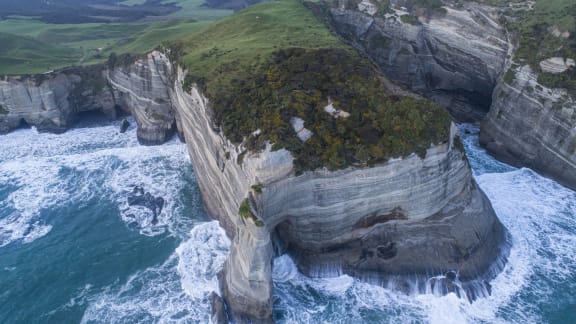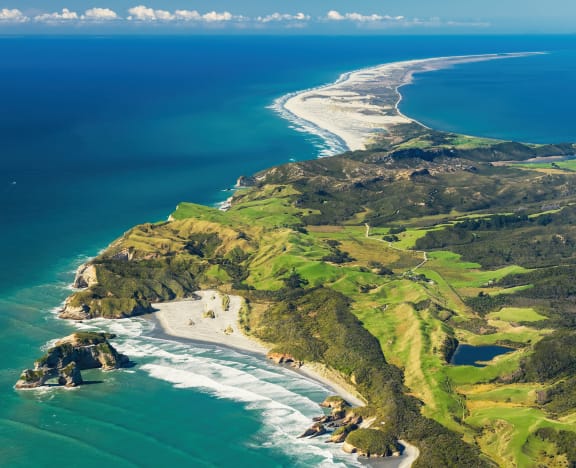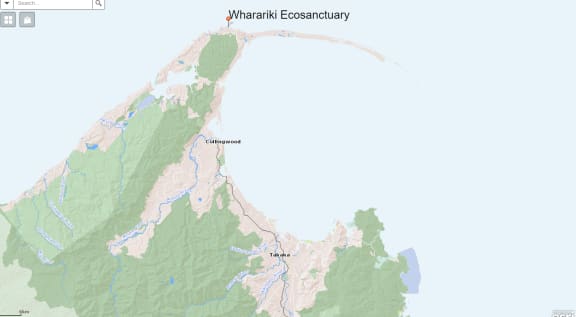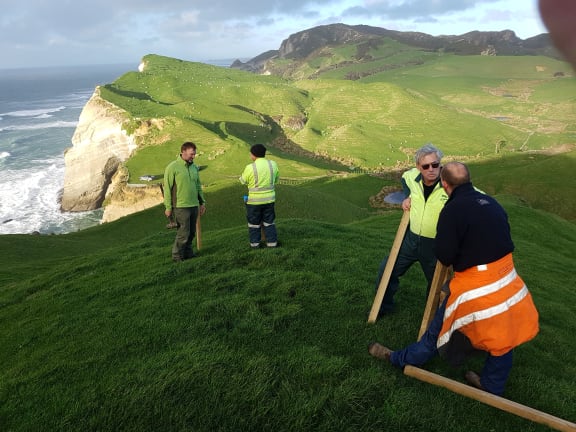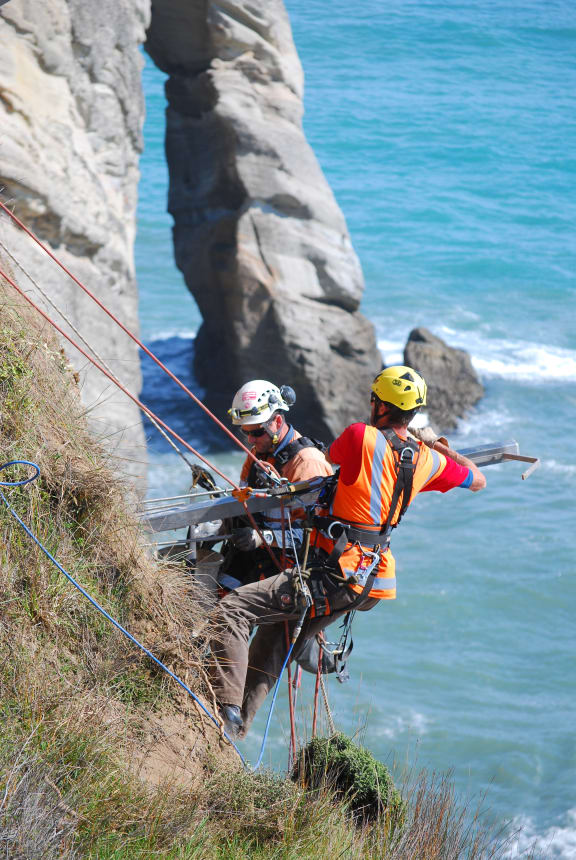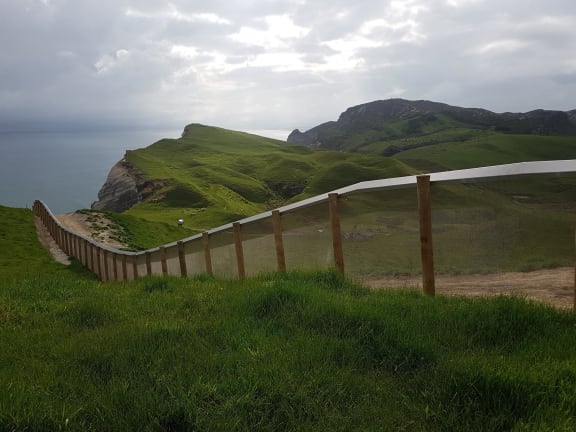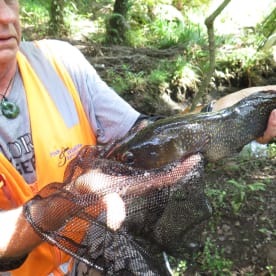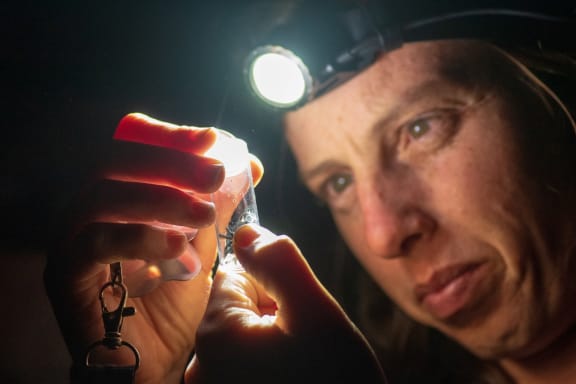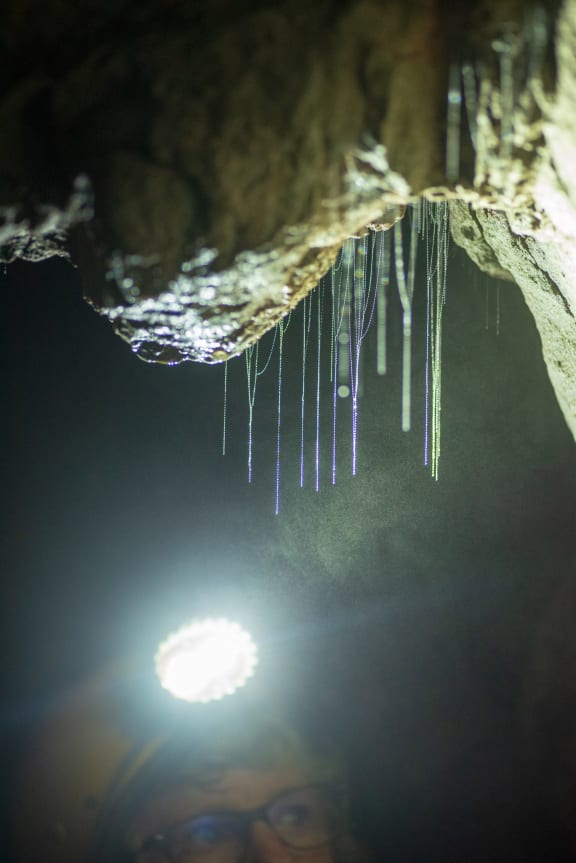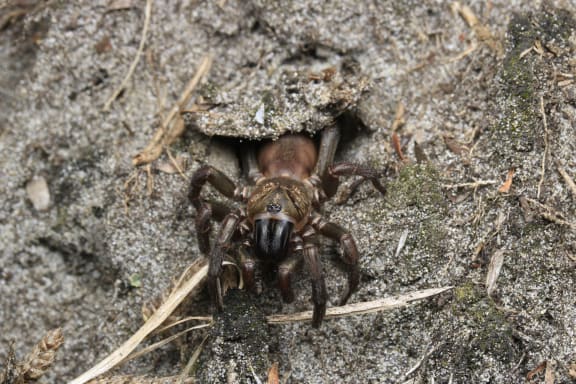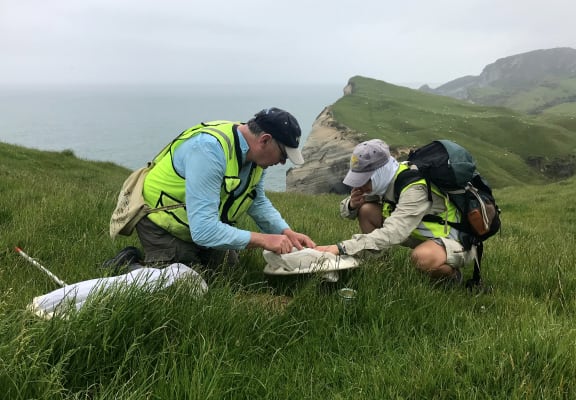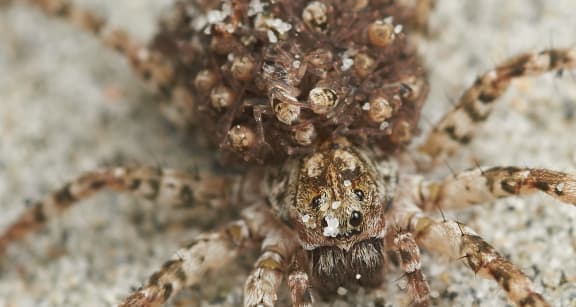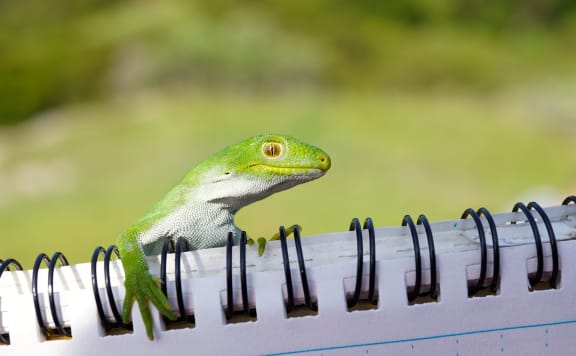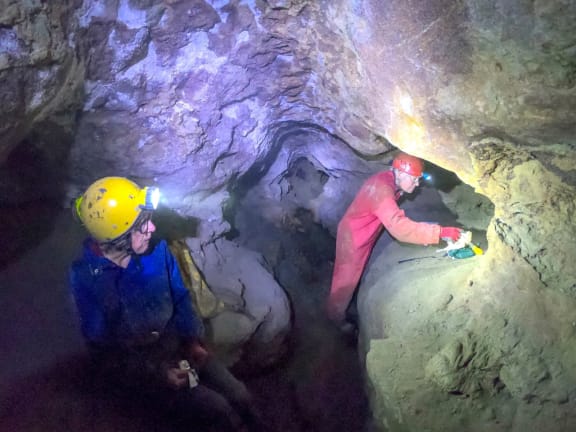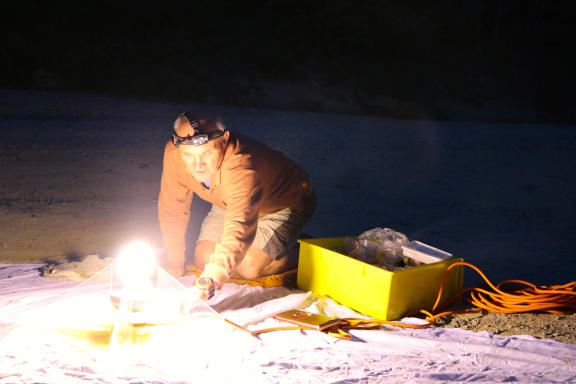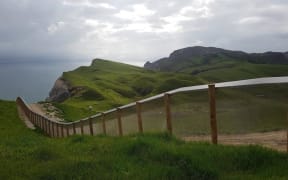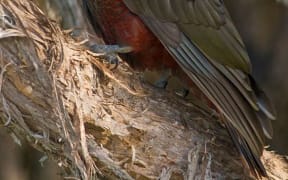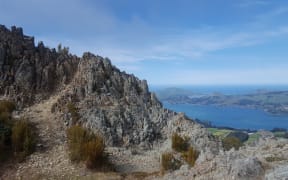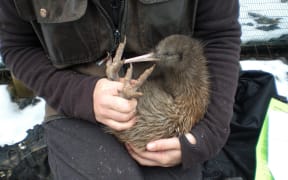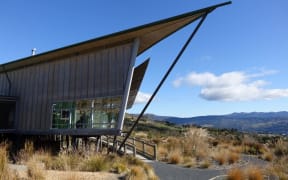A new ecosanctuary with a predator-proof fence has been opened at Cape Farewell, in Golden Bay.

Wharariki Ecosanctuary at Cape Farewell. Photo: Supplied / Peter Butler
A 200 metre predator-proof fence above the wind-blown cliffs of Cape Farewell now contains a 2.5 hectare sanctuary for seabirds, rare native plants, giant snails and geckos.
It's hoped that it will one day be a new home for endangered species.
Conservation Minister Eugenie Sage said native plants and wildlife would be able to thrive, without being browsed or eaten, within the Wharariki Ecosanctuary.
"[The fence] should help seabirds to re-establish breeding colonies on the mainland."
A $59,200 grant from the DOC's Community Conservation Fund will be available to support the restoration of the Wharariki stream and wetland, and expand existing trap lines.
"There has been a fantastic community effort supported by the Department of Conservation to create the Wharariki Ecosanctuary and establish a safe haven for sea birds such as pakahā/fluttering shearwaters and wildlife such as geckos," Sage said.
Craig Potton of the HealthPost Nature Trust said eco sanctuaries are important time machines.
"This fence is a portal to the past, to how it was before humans arrived and it's a hope for such an abundance again in the future.
"The fence will of course in that sense take us back in time before humans and bring us forward into a future where we are more compassionate to other forms of life."
Work on the fence began in September 2019 and has just been completed.
The aim this year is to be able to remove all predators like rats, mice, possums and stoats. Then later in 2020 or early 2021, it is hoped that the first birds will be relocated from offshore islands.
The sanctuary has been established in a partnership between local business HealthPost, Manawhenua ki Mōhua (Ngāti Tama, Ngāti Rārua and Te Ātiawa) and the Department of Conservation.
"Large seabird colonies on coastal cliffs were once common around mainland New Zealand before pests such as rats and stoats were introduced and land clearance destroyed the habitat they depended on. These combined pressures decimated seabird numbers. Significant populations of burrowing seabirds are now largely relegated to offshore islands."
Sage said this project would help in achieving New Zealand's Predator Free 2050 goal.
"It's projects like this that are crucial to providing safe havens for these threatened plants and wildlife on mainland New Zealand."
